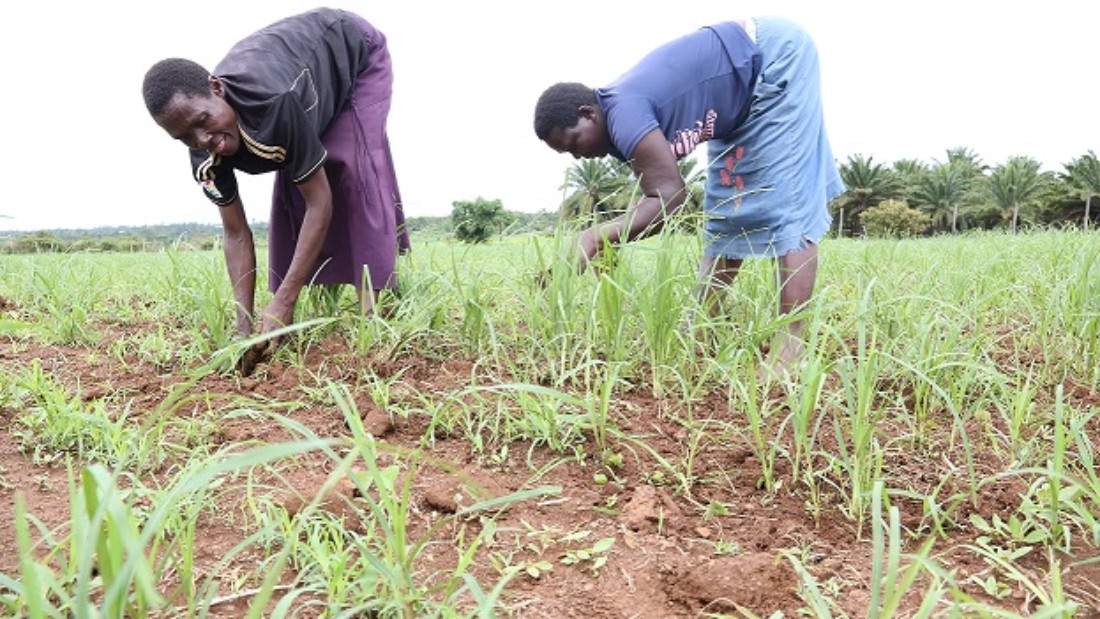By Joyce Chimbi I j.chimbi@gmail.com
Food security and sustainability experts are concerned that the country’s food consumption patterns are imbalanced, unsustainable and places the country off track towards ending hunger. Nairobi-based food safety and security expert Evans Kori says across all 47 counties, food consumption is not in line with respective food production activities. This, he says, is an imbalance that has led to negligible progress towards eradicating hunger, food insecurity and all forms of malnutrition. As per the ‘State of Food Security and Nutrition in the World Report 2021’, worldwide, countries have not progressively made inroads towards ensuring “access to safe, nutritious and sufficient foods for all people all year or to eradicating all forms of malnutrition.” The report indicates that a most pressing challenge towards access to healthy and sustainable diet is climate variability.
Within this context, the Barilla Foundation has used the latest evidence on food, health and the environment to devise the Double Health and Climate Pyramid model. The pyramid illustrates that global food goals cannot be achieved within current broken food systems and ecosystems. Kori says this means that ongoing and escalating food as well as climate crisis “must be resolved jointly because they are interlinked and not in isolation.”
“If countries continue to tackle food and climate issues independently of each other, progress will be slow, if at all, towards a sustainable, food secure and healthy planet,” he says. Current food production systems, he says, are not sustainable because they are catalysts of climate change, biodiversity loss and land degradation. Consequent outcomes, he says, affect our health and essentially, human survival and “people the world over will not access the nutrients they need and sustainably, within existing food systems.” UN’s Food and Agricultural Organisation (FAO) shows that in 2020, between 720 and 811 million people faced hunger and the situation is likely to escalate due to COVID-19 induced constraints. Within this context, research shows that nature-positive food production systems are much needed because current systems are broken and unsustainable. FAO estimates show “the agricultural sector accounts for one-third of greenhouse gas (GHG) emissions.” Additionally, the agricultural sector accounts for the largest share of freshwater withdrawals at 70 per cent on average and, 90 per cent of the water footprint of humanity, and 12 per cent of land use.
This research is illustrated in Barilla’s evidence-based Double Pyramid to promote health and longevity, and at the same time, reduce the impact of food choices on the ecosystem, and more specifically on climate change. The health and climate pyramids are placed side by side. The health side shows features of a balanced, healthy, and sustainable diet. The climate side shows the associated impact on health and the climate. Based on scientific evidence linking food choices in adult population to health outcomes, the health pyramid arranges food into 18 groups across seven layers according to the recommended frequency of consumption for people’s health. Foods such as fruits, vegetables and whole grain cereals that should be consumed most often are placed at the bottom of the pyramid. The second layer includes foods such as nuts and seeds, non-tropical vegetable oils, refined low glycemic index cereals and fermented milk.
The third layer includes pulses and fish as preferred sources of protein. This is followed by the fourth layer of foods such as poultry, eggs, milk and cheese. The fifth layer includes high glycemic index foods like white bread, refined rice and potatoes. No more than two servings of this food should be eaten per week. Animal fats, including butter, tropical oils like palm oil, red meat and sweets and baked goods made with refined flour and sugar are in the sixth layer of the pyramid because eating them is associated with a significantly higher risk of cardiovascular events. The advice is to eat these no more than once a week. In the seventh layer there are foods like processed meat like sausages, bacon, salami, associated with a high risk of cardiovascular and other chronic diseases, which should only be eaten occasionally. Within this context, the climate pyramid classifies different foods based on their carbon footprint or carbon dioxide equivalent emissions.
Again, foods are arranged into 18 groups and seven layers starting from those with a very low carbon footprint to a very high footprint. The pyramid shows production of animal-based products, especially red meat, followed by cheese and processed meat, layers five to seven cause the highest GHG emissions compared to plant-based products. As per research by FAO, “cattle raised for both beef and milk, and for inedible outputs like manure and draft power are the animal species responsible for the most emissions, representing about 65 per cent of the livestock sector’s emissions.” Barilla’s Double Pyramid is therefore an illustration of how people can eat varied, balanced and healthy diets and at the same time reduce their contribution to climate change.
The pyramid recommends a consumption frequency for all food groups and shows the impact they each have on health and the climate. Additionally, the Barilla Foundation devised another seven cultural double pyramids in line with different geographical contexts including Nordic countries and Canada, USA, South Asia, East Asia, Africa, Latin America and Mediterranean countries. Each of the seven pyramids reflects and celebrate the global value of diversity while promoting healthy, sustainable eating and consideration for planet health. On the one hand, the double pyramid provides a summary of key knowledge gained from medicine, nutrition studies, and the impact of people’s food choices on the planet. On the other, it is a consumer education tool.


